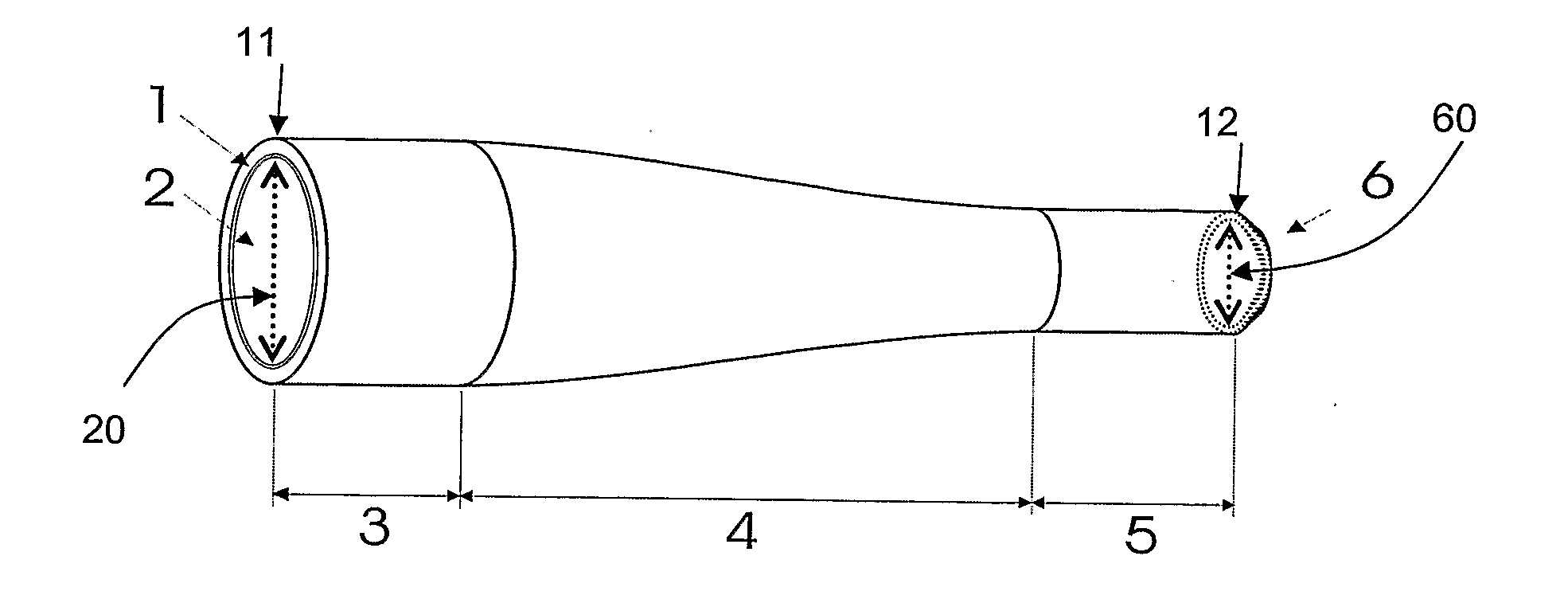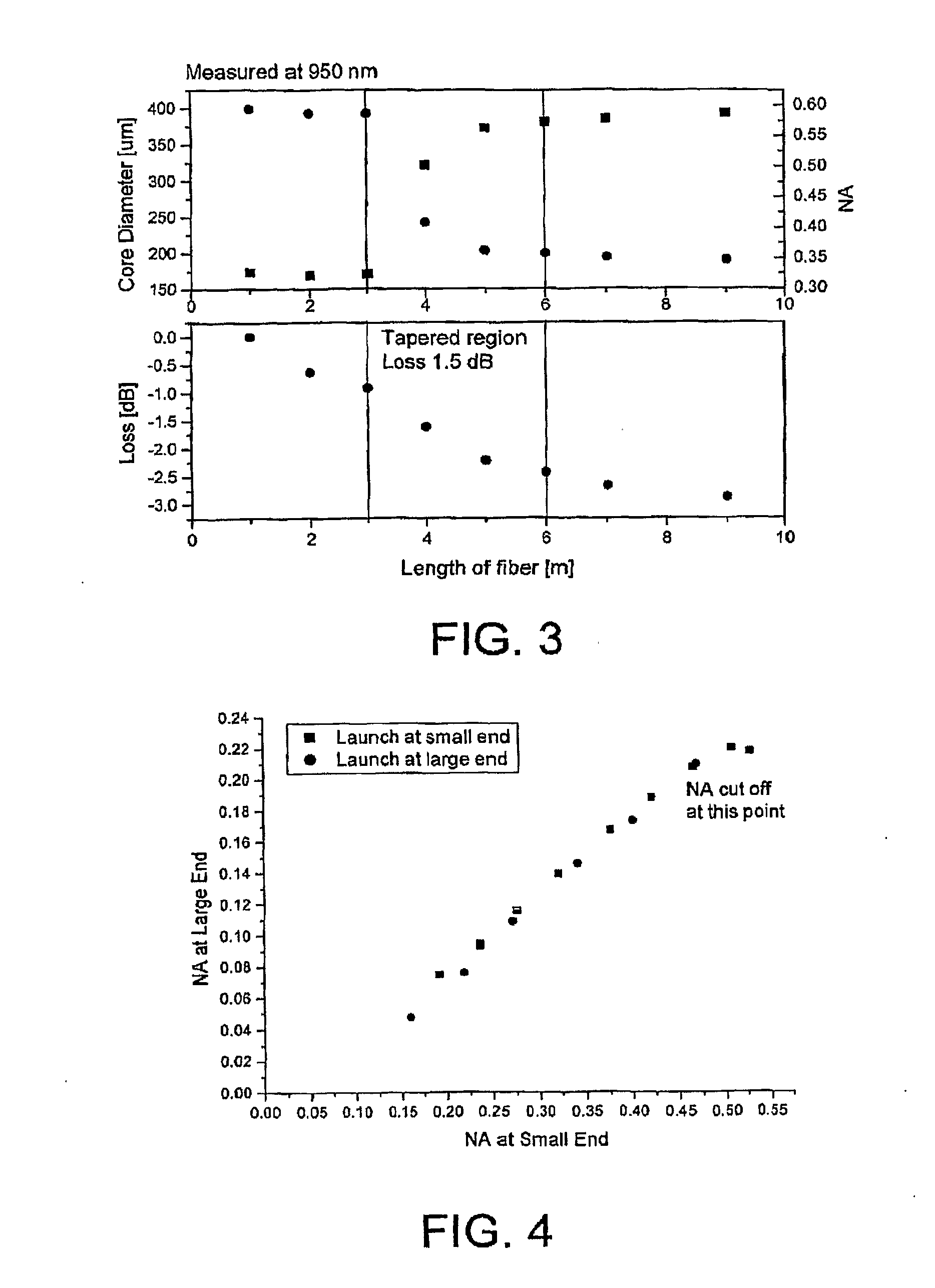Optical Coupler Devices, Methods of Their Production and Use
a technology of optical couplers and optical couplers, applied in the direction of instruments, cladded optical fibres, optical elements, etc., can solve the problem of insufficient control
- Summary
- Abstract
- Description
- Claims
- Application Information
AI Technical Summary
Benefits of technology
Problems solved by technology
Method used
Image
Examples
Embodiment Construction
[0256] Optical components according to the present invention are typically in the form of optical fibre, i.e. flexible light guiding devices. The optical fibres have a longitudinal direction and a cross-section perpendicular thereto. The optical fibre comprises a number of longitudinally extending features that may vary in cross-sectional size along the fibre (a photonic crystal fibre). The variation is in the form of a tapering, providing larger cross sectional feature dimensions in a first fibre end than in a second fibre end. The optical fibre comprises an air-clad. An air-clad is in the present context taken to mean a cladding region comprising holes or voids that surrounds a multi-mode core. As the dimensions of the air-clad are reduced as the fibre is tapered down, the NA of the optical fibre is increased. This is used to provide coupling of light from a large spot / core size and a low NA to a small spot / core size with a high NA.
[0257] Most references to physical fibre paramet...
PUM
 Login to View More
Login to View More Abstract
Description
Claims
Application Information
 Login to View More
Login to View More - R&D
- Intellectual Property
- Life Sciences
- Materials
- Tech Scout
- Unparalleled Data Quality
- Higher Quality Content
- 60% Fewer Hallucinations
Browse by: Latest US Patents, China's latest patents, Technical Efficacy Thesaurus, Application Domain, Technology Topic, Popular Technical Reports.
© 2025 PatSnap. All rights reserved.Legal|Privacy policy|Modern Slavery Act Transparency Statement|Sitemap|About US| Contact US: help@patsnap.com



